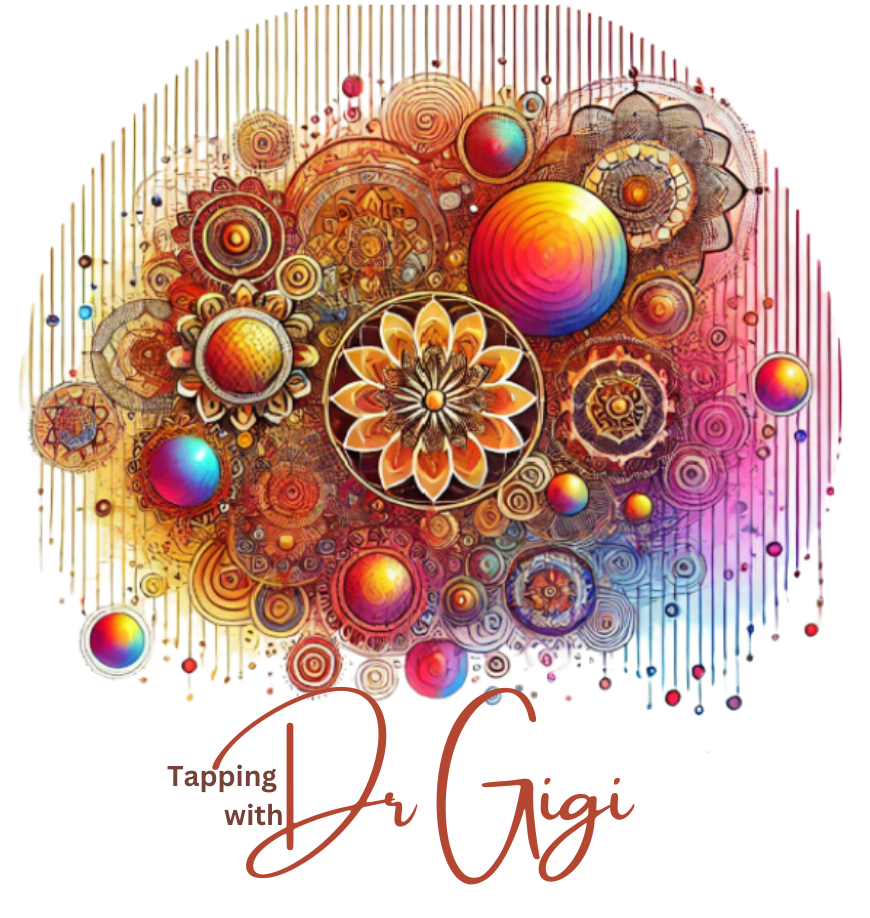Tapping, also known as Emotional Freedom Techniques (EFT), has emerged as a powerful tool for emotional well-being over the past few decades. This practice combines elements of ancient Chinese acupressure and modern psychology to create a simple yet effective method for managing stress, anxiety, and other emotional challenges. As interest in holistic and alternative therapies continues to grow, the tapping future looks promising, with numerous trends and innovations on the horizon. This comprehensive blog will explore the evolving landscape of tapping for emotional well-being, examining its current state, emerging trends, technological advancements, and potential future developments.
Tapping involves using the fingertips to gently tap specific meridian points on the body while focusing on a particular issue or emotion. This process is believed to help balance the body’s energy system, reduce emotional distress, and promote healing. Tapping is often used to address a wide range of issues, including anxiety, stress, trauma, phobias, and physical pain.
The Science Behind Tapping
Although tapping is rooted in ancient practices, scientific research has begun to shed light on its mechanisms and effectiveness. Studies have shown that tapping can reduce cortisol levels, the hormone associated with stress, and increase the production of serotonin, a neurotransmitter that contributes to feelings of well-being. Neuroimaging studies have also indicated that tapping can alter brain activity in areas related to stress and emotional regulation.
The Current State of Tapping
1) Widespread Adoption and Recognition
Tapping has gained widespread recognition and adoption among practitioners and individuals seeking alternative therapies. Organizations such as the Association for Comprehensive Energy Psychology (ACEP) and the Tapping Solution Foundation have played a crucial role in promoting tapping and providing resources for practitioners and clients. Additionally, tapping is increasingly being integrated into mainstream therapeutic practices, with many mental health professionals incorporating it into their treatment protocols.
2) Applications of Tapping
Tapping is used in various settings to address a multitude of issues. Some of the most common applications include:
- Stress and Anxiety Reduction: Tapping is highly effective in reducing stress and anxiety, making it a popular tool for individuals dealing with daily pressures and chronic stress.
- Trauma and PTSD: Many practitioners use tapping to help clients process and heal from traumatic experiences and post-traumatic stress disorder (PTSD).
- Phobias and Fears: Tapping can help individuals overcome specific phobias and fears, such as fear of flying, public speaking, or heights.
- Pain Management: Some studies suggest that tapping can alleviate physical pain by addressing the emotional components associated with it.
- Performance Enhancement: Athletes, performers, and professionals use tapping to improve focus, confidence, and overall performance.
Emerging Trends in Tapping
1) Integration with Technology
Integrating technology with tapping practices is one of the most significant trends shaping the future of this modality. As digital health tools become more sophisticated, tapping apps and online platforms make it easier for individuals to access tapping techniques and resources.
2) Tapping Apps
Several tapping apps have been developed to guide users through tapping, providing step-by-step instructions and audio-visual aids. These apps often include features such as personalized tapping sequences, progress tracking, and access to a library of tapping scripts for various issues. Popular tapping apps include The Tapping Solution App, EFT Tapping & Tapping for Anxiety.
3) Virtual Reality (VR) and Augmented Reality (AR)
Virtual Reality (VR) and Augmented Reality (AR) technologies hold immense potential for enhancing tapping experiences. VR and AR can create immersive environments that facilitate deep relaxation and focus, making tapping sessions more effective. For example, users could virtually “tap” on meridian points using VR gloves or see visualizations of energy flow while tapping with AR glasses.
4) Online Tapping Communities
The rise of online communities has created new opportunities for individuals to connect and support each other in their tapping journeys. Social media platforms, online forums, and virtual support groups allow users to share experiences, exchange tips, and find encouragement from like-minded individuals. These communities also provide a platform for practitioners to reach a broader audience and offer remote tapping sessions.
5) Integration with Other Therapies
Tapping is increasingly being integrated with other therapeutic modalities to enhance its effectiveness. Some examples include:
- Cognitive Behavioral Therapy (CBT): Combining tapping with CBT can help clients more effectively address negative thought patterns and behaviors.
- Mindfulness and Meditation: Integrating tapping with mindfulness practices can deepen relaxation and promote greater self-awareness.
- Yoga and Movement Therapies: Tapping can be incorporated into yoga and movement therapies to address emotional blockages and promote holistic healing.
6) Research and Evidence-Based Practice
As interest in tapping grows, so does the need for rigorous scientific research to validate its effectiveness. Future research efforts will likely focus on large-scale clinical trials, meta-analyses, and longitudinal studies to provide more robust evidence for tapping’s benefits. Additionally, researchers are exploring the underlying mechanisms of tapping, such as its impact on the nervous system and brain function.
Technological Innovations in Tapping
1) Biofeedback and Wearable Devices
Biofeedback and wearable devices are becoming increasingly popular tools for enhancing the tapping experience. These devices can monitor physiological responses such as heart rate, skin conductance, and brain activity, providing real-time feedback during tapping sessions. By observing how their body responds to tapping, individuals can gain insights into their stress levels and emotional states, allowing for more targeted and effective interventions.
2) Heart Rate Variability (HRV) Monitoring
Heart rate variability (HRV) measures the variation in time between heartbeats and is considered an indicator of autonomic nervous system function. High HRV is associated with greater resilience to stress, while low HRV is linked to chronic stress and anxiety. HRV monitoring devices, such as wearable heart rate monitors, can provide valuable feedback during tapping sessions, helping individuals gauge their stress levels and track improvements over time.
3) EEG and Neurofeedback
Electroencephalography (EEG) and neurofeedback devices measure brain activity and provide feedback on neural patterns associated with stress and relaxation. These devices can be used with tapping to help individuals achieve optimal brain states for emotional healing. By observing changes in brain activity, users can refine their tapping techniques and enhance their emotional well-being.
4) AI-Powered Tapping Assistants
Artificial intelligence (AI) is revolutionizing many aspects of healthcare, and tapping is no exception. AI-powered tapping assistants can provide personalized guidance and support, adapting tapping sequences based on individual needs and preferences. These virtual assistants can analyze user data, such as emotional states and progress metrics, to offer tailored recommendations and feedback.
5) Chatbots and Virtual Therapists
AI chatbots and virtual therapists are being developed to provide real-time support and guidance for individuals practicing tapping. These AI-powered tools can conduct initial assessments, recommend tapping sequences, and offer emotional support, making tapping more accessible and convenient.
6) Predictive Analytics
Predictive analytics involves using AI algorithms to analyze historical data and predict future outcomes. In the context of tapping, predictive analytics can help identify which individuals are most likely to benefit from tapping and tailor interventions accordingly. By analyzing factors such as demographic information, emotional states, and tapping history, AI can optimize tapping protocols for maximum effectiveness.
Future Developments in Tapping
1) Personalized Tapping Protocols
Personalization is a key trend that will be tapping into the future. As our understanding of individual differences in emotional responses and healing mechanisms grows, tapping protocols will become increasingly tailored to each person’s unique needs. Personal tapping protocols may consider personality traits, emotional history, and physiological responses to create customized tapping sequences.
2) Integration with Genomic Data
The integration of tapping with genomic data represents an exciting frontier in personalized emotional healing. Advances in genomics and epigenetics are shedding light on the genetic factors that influence emotional health and resilience. By combining tapping with genetic insights, practitioners can develop targeted interventions that address the underlying biological factors contributing to emotional distress.
3) Telehealth and Remote Tapping Sessions
The COVID-19 pandemic has accelerated the adoption of telehealth services, and tapping is no exception. Remote tapping sessions conducted via video conferencing platforms have become increasingly popular, allowing individuals to access tapping therapy from the comfort of their homes. Telehealth tapping sessions provide convenience, accessibility, and continuity of care, making tapping more widely available.
4) Group Tapping and Community Healing
Group tapping sessions and community healing events are gaining traction as powerful ways to promote emotional well-being. Group tapping sessions offer a sense of connection and shared experience, enhancing the therapeutic benefits of tapping. Community healing events, such as tapping circles and workshops, provide opportunities for individuals to come together, learn tapping techniques, and support each other’s healing journeys.
5) Tapping in Educational Settings
Another promising development is the incorporation of tapping into educational settings. Schools and universities are beginning to recognize the importance of emotional well-being in academic success and overall development. By integrating tapping into curricula and offering tapping workshops, educational institutions can equip students with valuable tools for managing stress, enhancing focus, and promoting mental health. The future of tapping for emotional well-being is bright, with numerous trends and innovations poised to transform this powerful practice. From integrating technology and personalized protocols to expanding telehealth services and group healing events, tapping is evolving to meet the diverse needs of individuals seeking emotional relief. As scientific research continues to validate the effectiveness of tapping and technological advancements and enhance its accessibility and impact, tapping is set to play an increasingly prominent role in promoting emotional well-being. By staying attuned to these trends and innovations, practitioners and individuals alike can harness the full potential of tapping to achieve greater emotional health and resilience.

